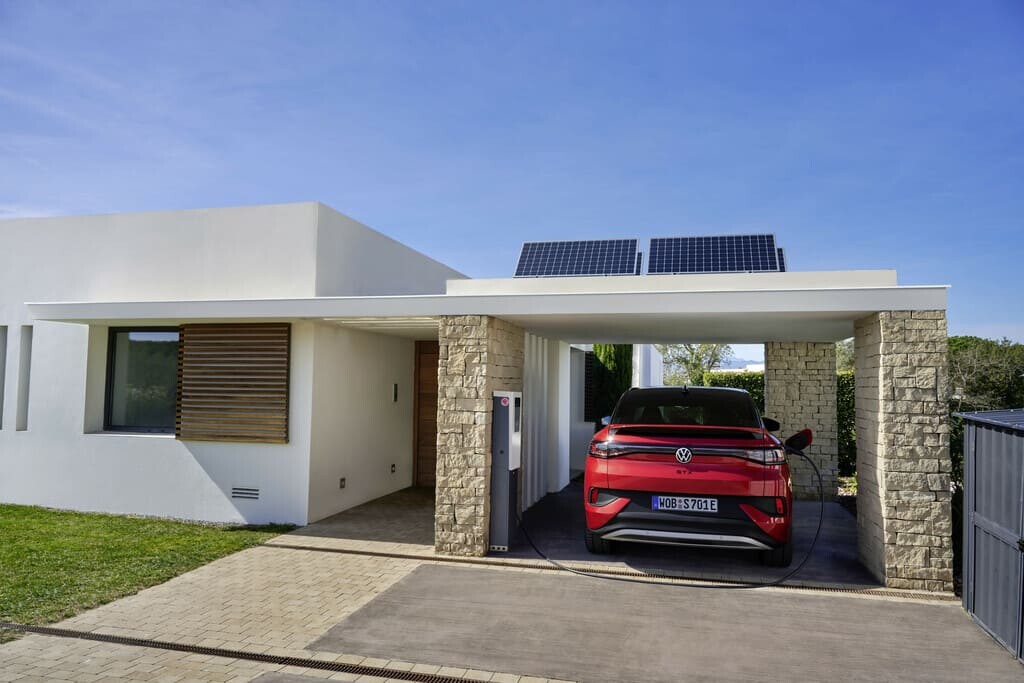Maximizing Energy Efficiency: Volkswagen’s Bidirectional Charging in ID. Models
Volkswagen introduces groundbreaking bidirectional charging capabilities in their latest ID. models, a game-changing innovation set to transform electric vehicles into mobile energy storage units. This new function, available in models equipped with a 77 kWh battery and ID. Software 3.5 or higher, marks a significant stride towards sustainable energy management.

VW ID bidirectional charging - "Vehicle to Home" fucntion
Bidirectional charging technology empowers electric cars to become dynamic energy reservoirs, enabling the innovative “Vehicle to Home” function. Volkswagen, in collaboration with partner HagerEnergy GmbH, has initiated a pilot project in Sweden. The project involves supplying an entire housing estate with vehicles and corresponding charging infrastructure, showcasing the immense potential of this technology.
Imelda Labbé, Volkswagen Board Member for Sales, Marketing, and After Sales, emphasizes, “We are actively shaping the energy transition with products and services centered around the electric car. With the bidirectional charging function, we’re tailoring new services to our customers’ needs, offering energy cost savings while promoting sustainable energy usage.”
Empowering Sustainability Through Bidirectional Charging
Volkswagen’s ID. models, featuring the 77 kWh battery, can leverage bidirectional charging to store surplus electricity at home. This technology ensures a consistent power supply even during cloudy days or evenings when solar energy from photovoltaic systems is limited. Customers gain autonomy, choosing between public grid electricity or self-generated power stored in their vehicle’s battery.
We are actively shaping the energy transition with products and services centered around the electric car. With the bidirectional charging function, we’re tailoring new services to our customers’ needs, offering energy cost savings while promoting sustainable energy usageImelda Labbé, Volkswagen Board Member for Sales, Marketing, and After Sales
Intelligent Charging for Grid Stability
By utilizing smart electricity tariffs and algorithms, EVs can charge during peak renewable energy availability, preventing waste when renewable sources produce surplus power. These electric vehicles contribute by feeding excess electricity back into the home grid (vehicle-to-home) and potentially stabilizing the broader electricity grid in the future.
Real-World Impact in Sweden’s Stenberg Housing Estate
In Hudiksvall, Sweden, residents in the Stenberg housing estate are experiencing the benefits of this technology. Entrepreneur Klas Boman’s vision to remodel houses for a sustainable future integrates electric vehicles as energy storage, aligning with Volkswagen’s support since April 2021. This pioneering initiative is poised to revolutionize the energy market.
Volkswagen’s Pioneering Role in Bidirectional Charging
Volkswagen’s bidirectional charging solution, based on the widely used CCS (Combined Charging System) DC standard in Europe, adheres to ISO standard 15118-2, facilitating seamless communication between electric vehicles and wallboxes. This technology dynamically extends home storage systems, ensuring energy supply continuity for homes.
VW ID bidirectional charging
Looking Ahead: The Technology and Its Reach
In its initial phase, specific ID. models are compatible only with HagerEnergy GmbH’s S10 E COMPACT series DC home power station. However, future plans involve enabling other home power stations to operate with bidirectional charging stations (wallboxes).
Volkswagen’s innovation in bidirectional charging reflects a significant step forward in sustainable energy management, promising a future where electric vehicles not only facilitate mobility but also become integral components of energy-efficient households.


